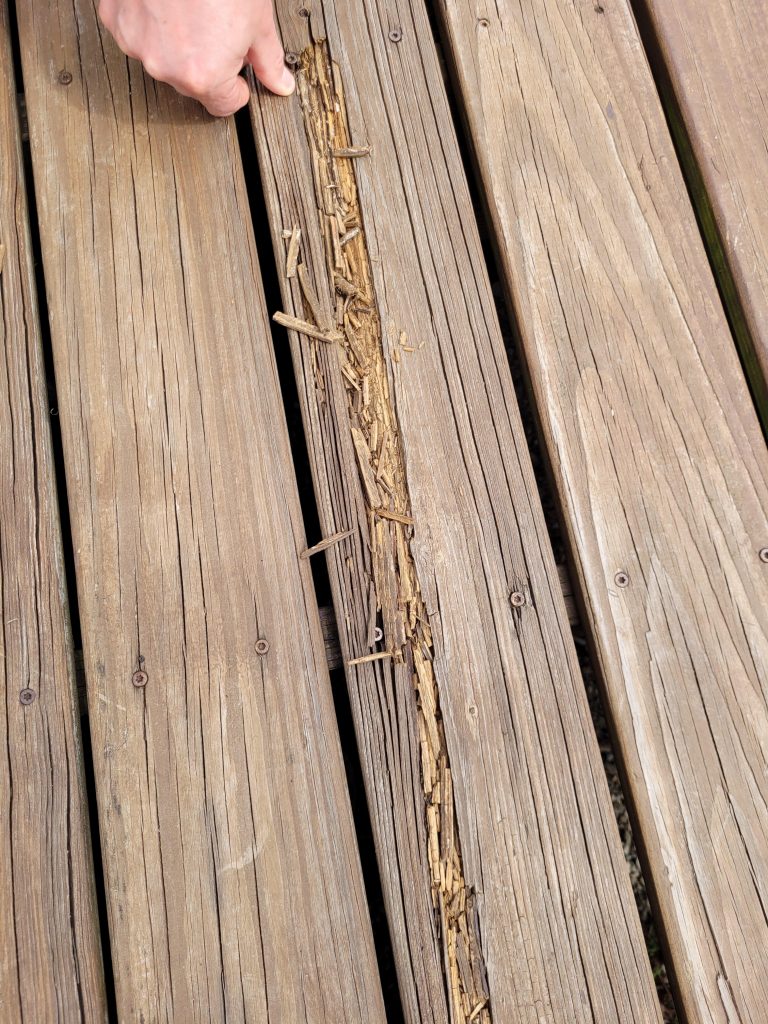Termites can be a major issue for homeowners, as an infestation can cause severe structural damage to your deck. In this article, we will discuss how to detect and prevent a termite infestation in your deck. We will first provide an introduction to termites and their capabilities.
Types of Termites
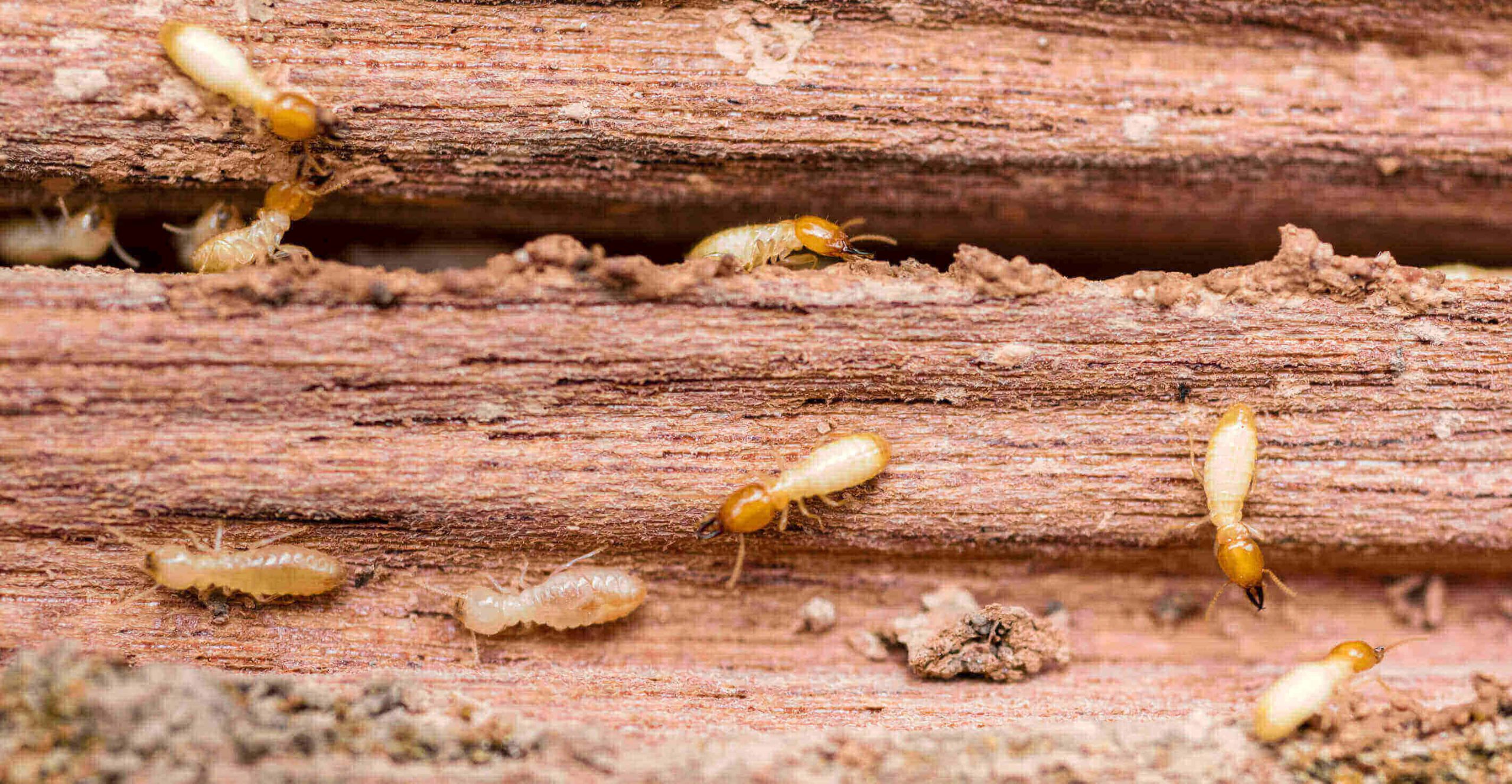
| Name | Description |
|---|---|
| Subterranean Termites | Live in colonies underground and build mud tubes to reach and feed on wood. |
| Drywood Termites | Live inside wood and do not require contact with the soil. |
| Formosan Termites | Live in large colonies with multiple kings and queens and can quickly cause extensive structural damage. |
| Conehead Termites | Live in colonies with a single queen and are found mainly in coastal areas. |
Termites are typically grouped into three primary categories: subterranean, drywood and Formosan. Subterranean termites live in colonies underground and build mud tubes to reach and feed on wood. Drywood termites live inside wood and do not require contact with the soil. Formosan termites live in large colonies with multiple kings and queens and can quickly cause extensive structural damage. Conehead termites live in colonies with a single queen and are found mainly in coastal areas.
Identifying Termite Infestation
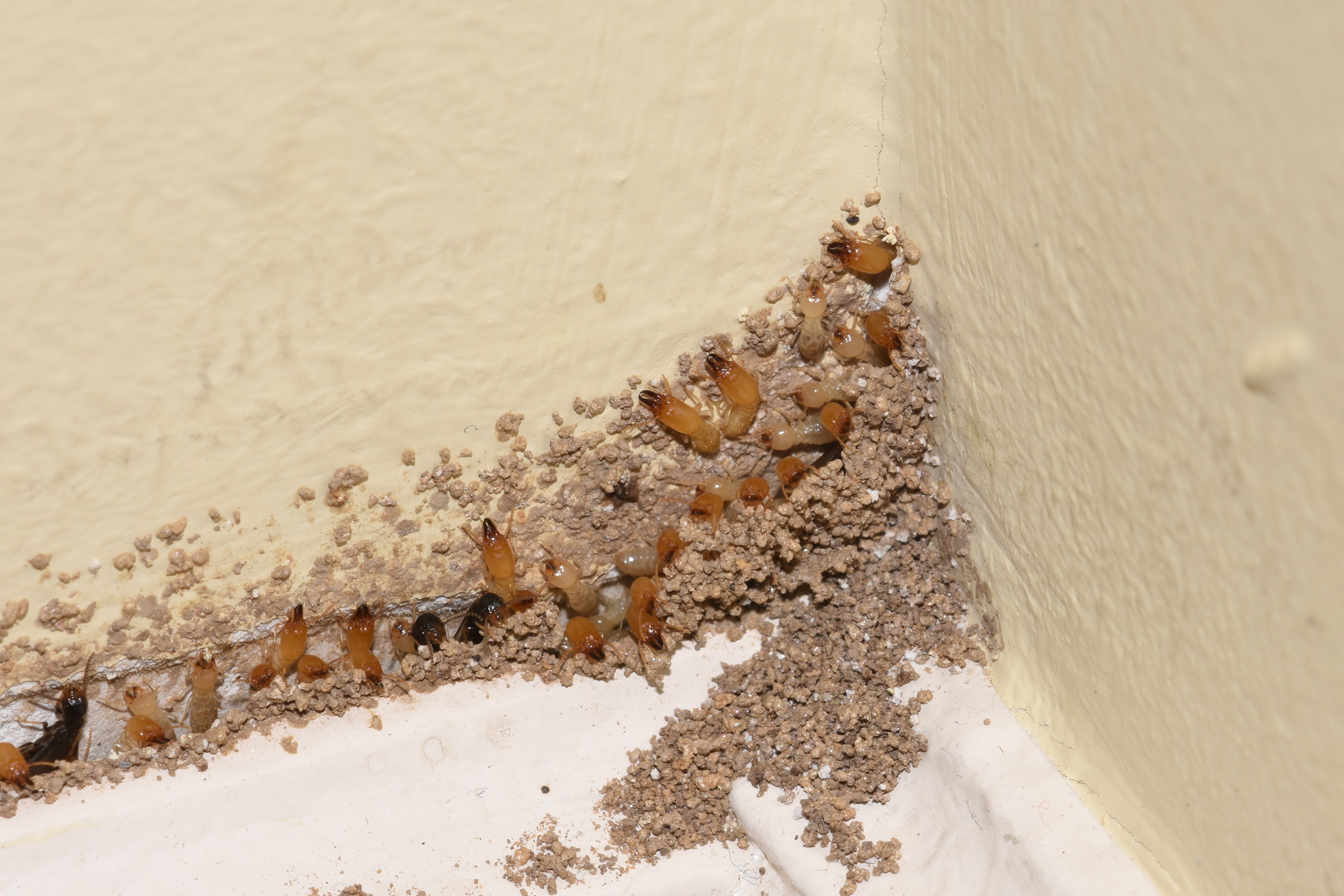
Termites can cause serious damage to decks, leaving them structurally weak and prone to collapse. Identifying a termite infestation can be difficult, as termites are small, hidden and often work unseen. However, there are a few signs to look out for that can indicate a termite infestation.
Wood Damage: One of the most obvious signs of a termite infestation is structural damage to the deck. This includes signs of weakening, such as cracking, warping, sagging and splintering. Pay particular attention to any spots that have been eaten away or hollowed out.
Mud Tubes: Termites build mud tubes to travel through and access food sources. These tubes are made up of mud and other materials, and can usually be found on the surface of the deck or underneath.
Winged Termites: Winged termites, also known as swarmers, are a sure sign of a termite infestation. These termites are the reproductive members of the colony, and will fly out in search of new areas to colonize. If you see winged termites, it is likely that the infestation is advanced and a professional should be consulted.
Discarded Wings: After mating, termites will discard their wings. These wings are a sure sign of a termite infestation and can be found around windows, doors and other entry points.
If you suspect a termite infestation, it is important to act quickly. A professional pest control company can help to identify the extent of the infestation and recommend appropriate measures to eradicate the termites.
Signs of Termite Damage
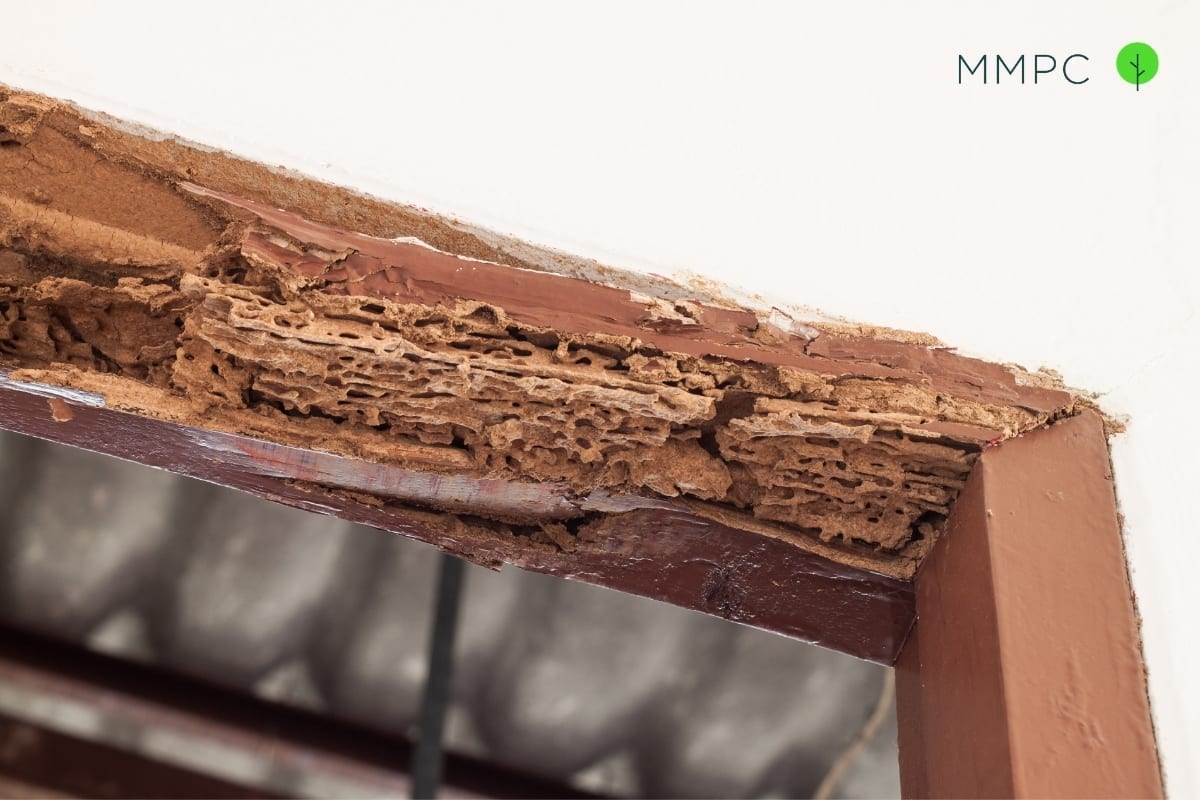
| Outward Signs | Inward Signs |
|---|---|
| Mud tubes on walls | Hollow sounding wood |
| Discarded wings near windows and doors | Discoloration of wood |
| Crumbling wood | Paper-like material in wood |
| Pin-sized holes in wood | Sagging floors |
Termite damage can be difficult to detect. Outward signs include mud tubes on walls, discarded wings near windows and doors, crumbling wood and pin-sized holes in wood. Inward signs include hollow sounding wood, discoloration of wood, paper-like material in wood and sagging floors. If you suspect termite damage, contact an experienced pest control company to inspect your deck.
Prevention of Termite Infestation

- Make sure to keep your wooden decks clean and free of debris and moisture.
- Check the wood around your deck for signs of termite activity.
- Remove wood that is decayed, rotted, or showing signs of termite damage.
- Replace decaying wood with pressure-treated wood that is resistant to termites.
- Keep any wood debris away from your home’s foundation.
- Look for any signs of termite activity in your walls, floors, or other areas of your home.
- Regularly inspect the foundation of your home for any signs of termite infestation.
- Seal any cracks and crevices in your home’s foundation.
- Ensure that any water drainage systems are working properly to prevent water from pooling around the foundation.
- Install a termite barrier around the perimeter of your home to help prevent termites from entering your home.
- Remove any dead wood in your yard that could be a source of food for termites.
Treatment of Termites in Decks
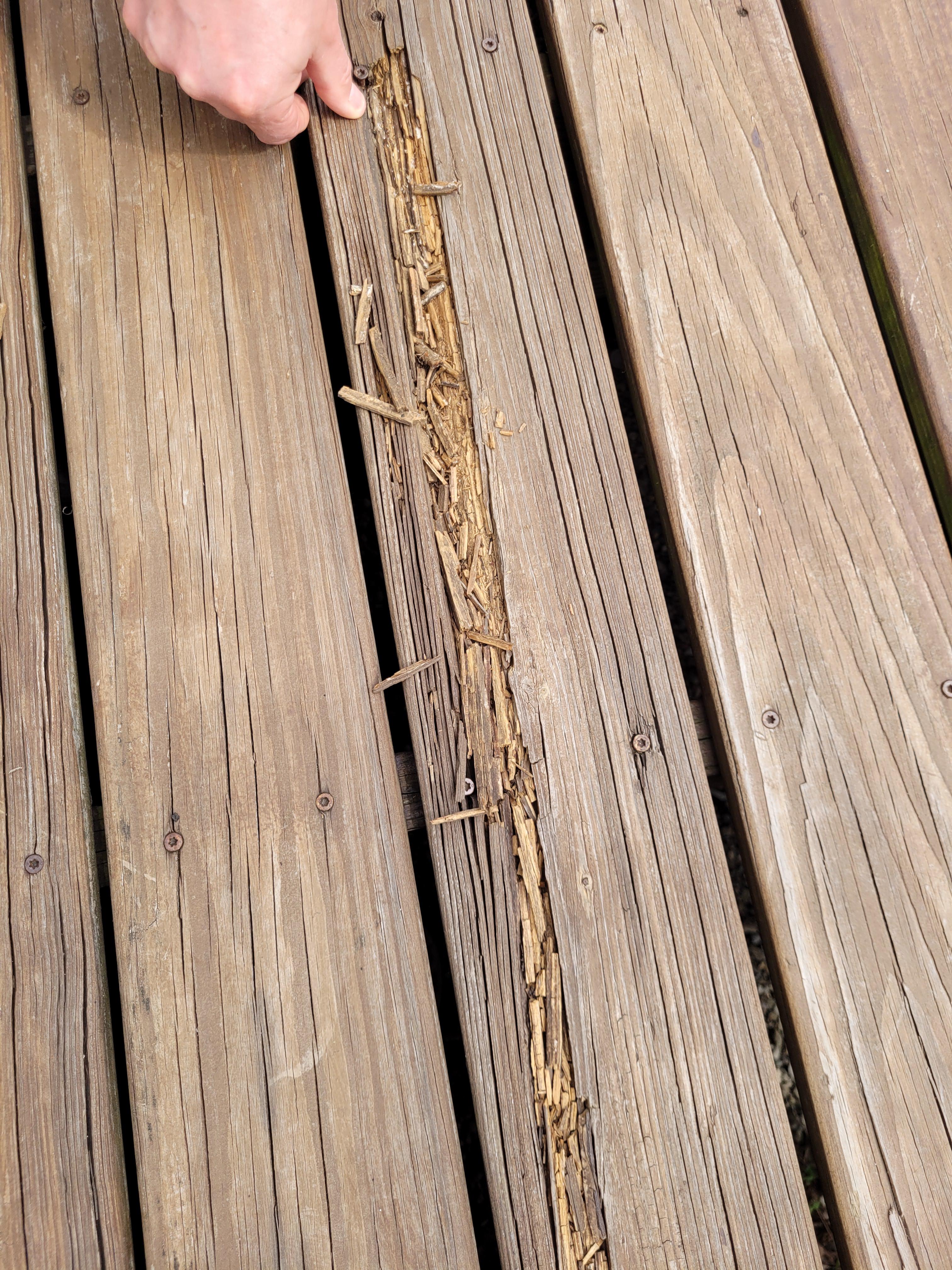
Termites can damage decks and other wood structures, resulting in costly repairs. To prevent termite damage, it is essential to treat decks for termites.
Chemical Treatment
Chemical treatment is the most effective way to protect decks from termites. The main chemical used in termite treatments is a pesticide called permethrin, which is applied to the wood surface as a liquid or foam. The pesticide will remain on the wood, killing any termites that come into contact with it.
Baiting
Baiting is another method of treating decks for termites. This method involves placing bait stations, which are small containers filled with a slow-acting pesticide, around the deck. This bait will attract and kill termites that come into contact with it.
Preventive Measures
In addition to treating decks for termites, preventive measures can also help protect wood structures. These measures include regularly inspecting decks for signs of termite damage, sealing any cracks or gaps in the wood, and maintaining a dry environment around the deck.
DIY Treatment
There are also DIY treatments available to protect decks from termites. These treatments involve mixing a pesticide solution and spraying it on the wood surface. While this method may be effective in killing some termites, it is not as effective as professional treatments and may not eliminate the entire termite colony.
Conclusion
Treating decks for termites is essential to prevent costly damage. Chemical treatments, baiting, and preventive measures are the most effective methods, although DIY treatments can also be used. A professional pest control company should always be consulted for the best results.
Professional Help
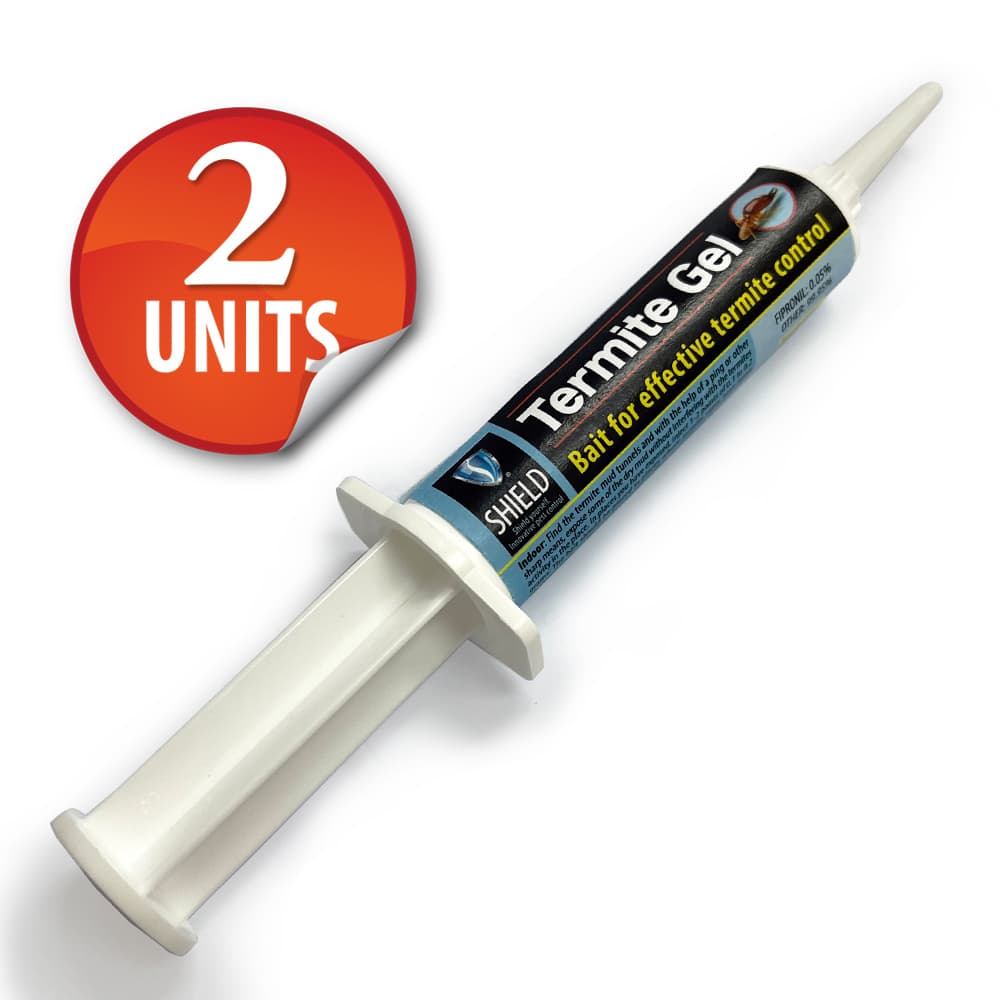
It is highly recommended to contact a professional pest control service if you have identified a termite infestation in your deck. Pest control experts can assess the severity of the issue, identify the species of termite, and recommend the best treatment for your deck. Depending on the extent of the infestation, treatments may include liquid termiticides, baiting systems, or other forms of insecticide treatments. Professional pest control services also have access to specialized equipment and tools to help them locate and eliminate termite colonies. In addition, they can provide advice on preventative measures to help protect your deck from future infestations.
DIY Solutions
Termite infestations in decks can be tackled with several DIY solutions. Firstly, it’s important to inspect the wood for any signs of termite damage or presence, such as mud tubes, discarded wings and wood damage. If you spot any of these signs, you’ll need to act quickly to ensure the problem isn’t exacerbated.
One way to tackle the problem is to use a targeted insecticide spray. Apply the spray to areas where termite activity has been identified and to any cracks or crevices in the wood. It is important to follow the instructions on the packaging and to exercise caution when dealing with insecticides.
Another DIY solution is to use a chemical soil treatment around the deck. This involves applying a chemical mixture around the perimeter of the deck to create a barrier between the termites and the wood. As with insecticides, it is important to read the instructions and follow safety precautions.
Finally, it is important to make sure the deck is well maintained and there are no cracks or crevices that can provide termites with entry points. Regularly inspect the deck for any signs of termite activity and repair any damage as soon as possible.
Cost of Termite Treatment
- For light to moderate infestations, spot treatment may cost as little as $100.
- For more serious infestations, tenting the entire structure may cost between $1000 and $3000.
- Fumigation may run anywhere from $2000 to $4500 depending on the size of the home.
- For large, commercial buildings, treatment may cost as much as $10,000.
- The cost of termite control may also include the use of chemicals, baits, and other related supplies.
Frequently Asked Questions
What are the signs of termites in a deck?
Termites in a deck often leave behind tell-tale signs such as wood that is soft to the touch, wood that sounds hollow when tapped, wood that appears blistered or raised, tunneling in wood, and the presence of sawdust or mud tubes. Additionally, the presence of termite wings, which are shed after they’ve mated, is a sure sign of an infestation.
How do I prevent termites from infesting my deck?
Ensure the deck is built with pressure-treated lumber that has been treated with a wood preservative that is specifically formulated to resist termite damage. Use a combination of physical barriers, such as a steel mesh or concrete barrier, and chemical barriers, such as a liquid or foam insecticide, to create a protective barrier between the soil and the deck. Make sure to keep the deck dry by regularly cleaning off any dirt, leaves or debris. Store firewood and other cellulose materials away from the deck, and keep the area free of excess moisture. Regularly inspect the area for signs of termite activity and take immediate action to eliminate and repair any damage.
How do I detect an infestation of termites in my deck?
Look for damaged wood, such as hollowed-out areas or wood that cracks easily when pressed upon. Also look for mud tubes or tunnels on the wood surface. If you find any of these signs, you should contact a professional to have your deck inspected for termites. You may also want to look for droppings around the deck, as this is another sign of an infestation.
What should I do if I find termites in my deck?
If you find signs of termites in your deck, the first thing to do is contact a professional pest control specialist for advice. They can inspect the deck and its surroundings to determine the extent of the infestation and recommend an appropriate course of action. This may include treating the deck with insecticides or fumigants, or it may involve replacing affected decking boards. In some cases, the entire deck may need to be removed and replaced.
Is it Possible to Treat a Deck for Termites on My Own?
Yes, it is possible to treat a deck for termites on your own. You can use either a chemical-based product or a natural pest control method to eliminate the pests. If using a chemical-based product, make sure to follow the directions on the label. Natural pest control methods include using diatomaceous earth, boric acid, or neem oil. However, it is best to contact a professional pest control service for an effective and safe treatment.
Conclusion
Regularly inspecting and maintaining decks is the best way to prevent a termite infestation. Homeowners should keep an eye out for signs of termites, such as mud tubes, wood damage, and frass, and contact a pest control specialist immediately if any signs are found. Additionally, homeowners should take preventive measures such as keeping wood away from the foundation, using treated wood, and sealing any cracks or crevices to prevent an infestation.

